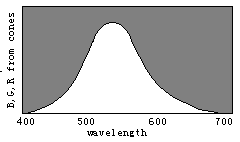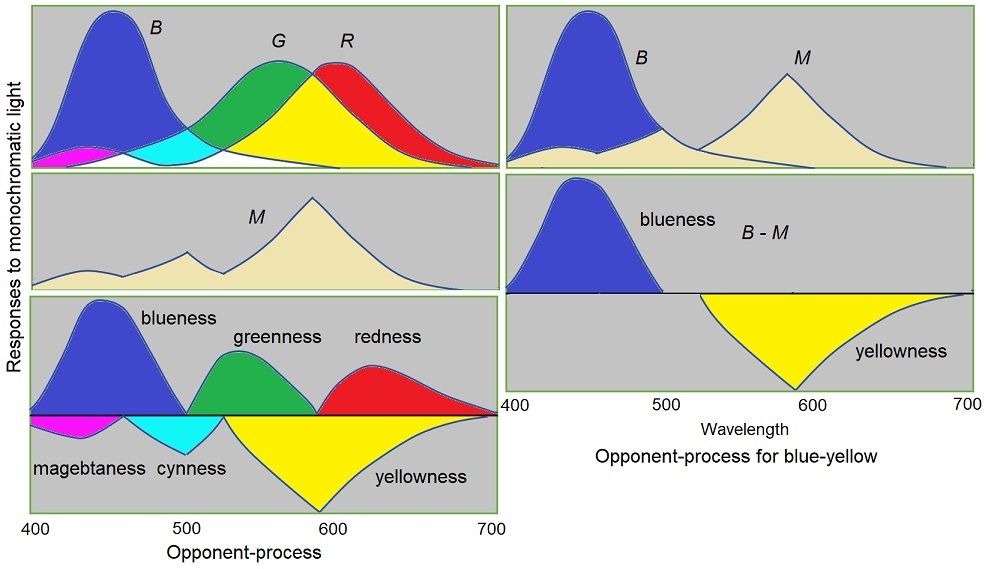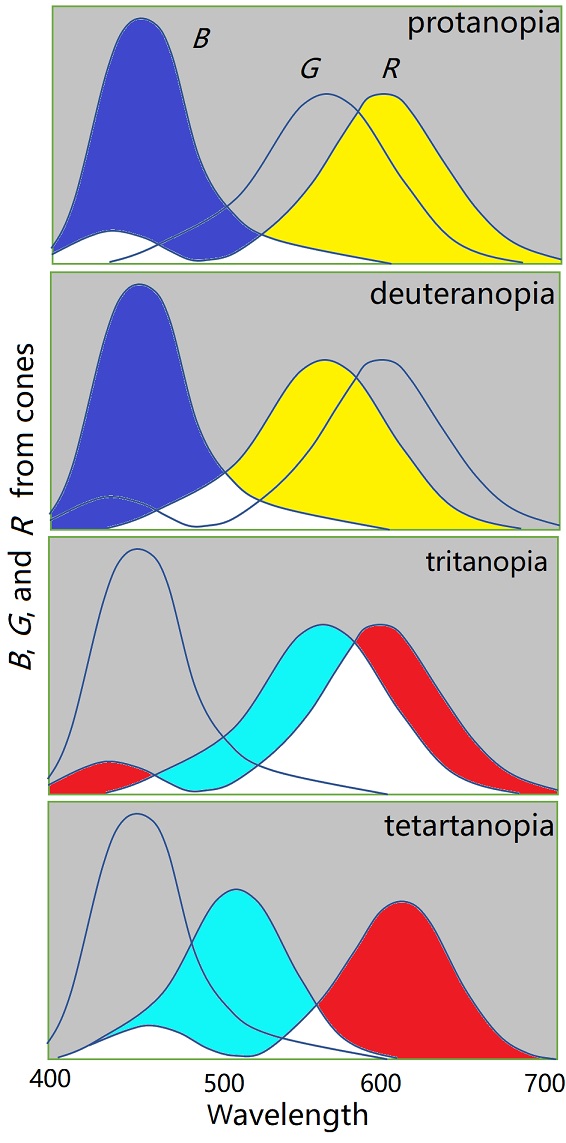
鲁晨光中文主页 English Homapage Papers on ArXiv Recent papers about Semantic Information and Statistical Learning
2021年7月发表的一篇英文文章——用译码模型解释色觉色觉进化, 色盲和互补处理。下面是中英文对照。
Research Features (研究特写) 专门邀请有特色研究的作者合作,发表研究特写。和学术期刊一样,它也要收费 。它有网页版本,也有纸质版本(声称发行两万多册)。其特点是: 艺术性介绍复杂的科学研究。所以图文并茂。另外文章修改也比较严谨。我有两篇比较合适,另一篇是《用需求美学解释鸟类审美趣味》。
我敢说,我的色觉模型是对扬-赫尔姆霍茨色觉理论的最好发展,迟早会被学术界公认。让时间检验吧!
| 中文:
用译码模型解释色觉(网页版) (PDF版) 摘要: 引言 广泛接受的颜色视觉理论是:颜色信号在视锥细胞(视网膜中的色光敏感细胞)阶段以三色素形式存在【1,2】,而在视神经(连接神经节细胞和脑皮层)阶段以互补色形式存在【3】。支持这个理论的数学模型被称为阶段模型(Zone Model)【4,5】。阶段模型存在已经超过半个世纪,存在不同版本。不幸的是,它们虽有改进,但是仍然不能解释为什么颜色信号以这种方式处理。并且,用它们并不能解释色觉进化, 也不便解释色盲。已有的两个阶段模型见图1 图1. 两种阶段模型用不同方式得到成对信号+red/-green(+红/-绿)。但是两者都使用颜色分量的加法得到黄色信号:R+G=Y(红加绿等于黄)或M+L=Y(中波+长波=黄)。 为了在这一知识缺口搭起桥梁,我于上世纪80年代提出色觉译码模型【6-8】——阶段模型的一个新版本。我们能用这一模型解释色觉进化和色盲【9】.这一研究引导了我后来的语义信息论和科学哲学研究【10-12】。
|
English: Explaining Colour Vision with the Decosing Model (pdf) (published on Research Features, Issue 135) Abstract: Despite technological developments, the colour vision mechanism of converting physical colours into psychological colours remains not clear enough. To fill this void, Chenguang Lu, Associate Professor at Changsha University, has developed the decoding model. Compared with other colour vision zone models, the decoding model can explain colour evolution, colour blindness, and the opponent-process more intuitively. Moreover, it can be applied to colour transformations in computer graphics. Introduction Colour perception has long been a topic of scientific interest. Despite vast technological developments, the colour vision mechanism of converting physical colours into psychological colours remains not clear enough. Solutions to this conundrum would help us understand colour vision and benefit industries including materials (textiles, plastics, etc.), lighting and colour imaging. A widely accepted theory of colour vision is that colour signals exist in tri-pigments in the zone of visual cones (photoreceptor cells in the retina) and opponent signals (produced by ganglion cells encoding the colour) in the visual nerves’ zone. This theory underpins mathematical models known as zone models. Unfortunately, zone models to date do not easily reveal why colour signals are processed in this way. Furthermore, they do not demonstrate how colour vision has been evolving, nor why different kinds of colour blindness exist. To bridge these knowledge gaps, Chenguang Lu, Associate Professor in the School of Computer Engineering and Applied Mathematics at Changsha University, China, has developed the decoding model, a new version of the zone model. Lu uses his decoding model of colour vision to explain both colour evolution and colour blindness. |
Some Figures


